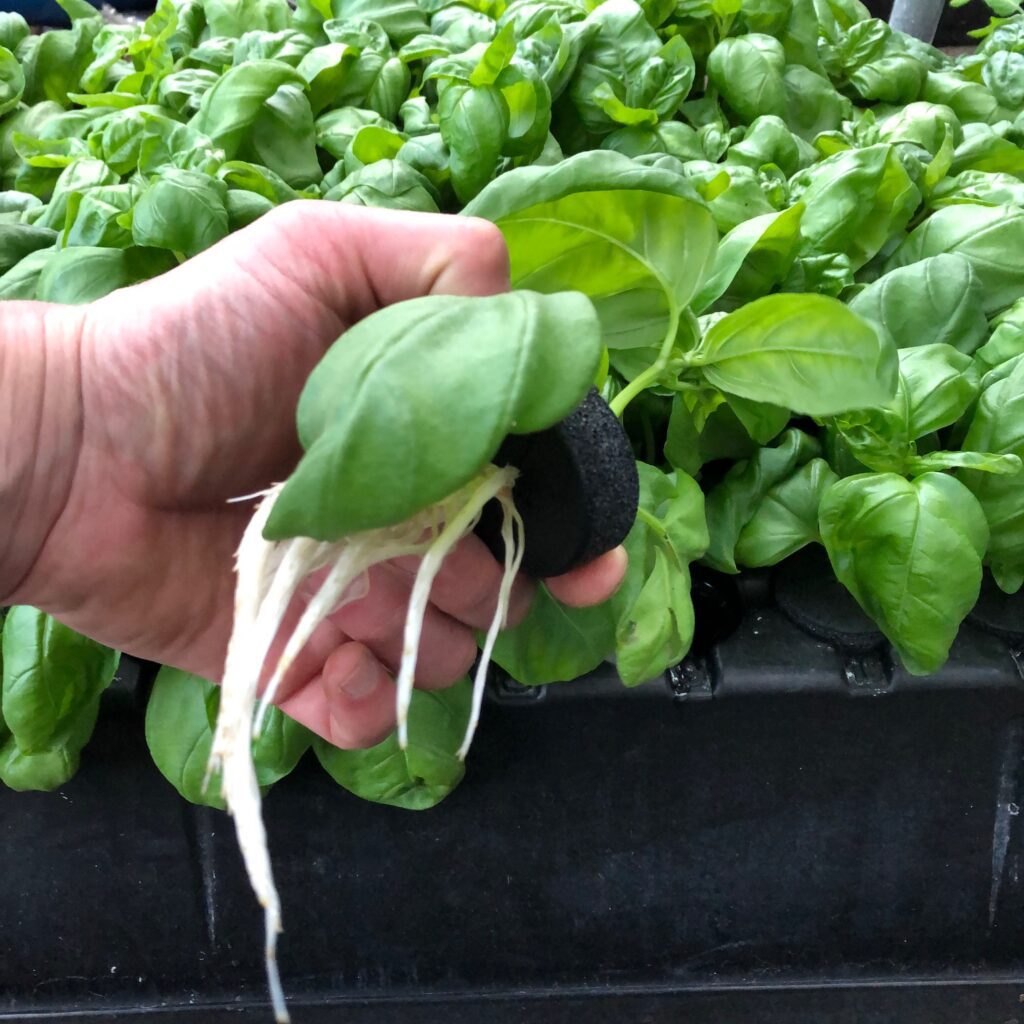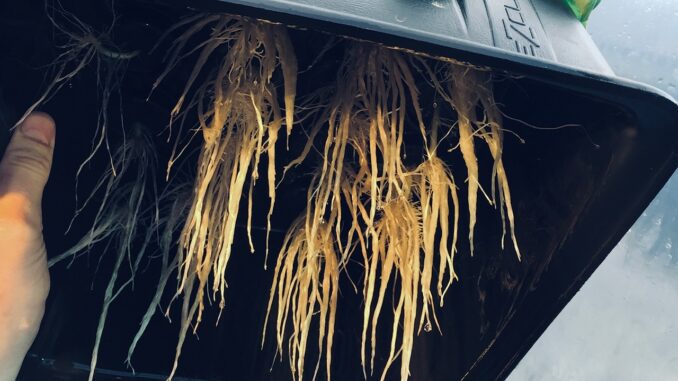
Aeroponic Cloner Rooting Time
How Long for Aeroponic Clones to Root?
There are several factors that influence aeroponic cloner rooting time. How long it takes for aeroponic clones to root can be made very consistent once the basic factors that effect the process are understood and managed. Obviously plant type and strain create the biggest differences. The type of aeroponic system used plays a strong role too, naturally. For example, low pressure aero-cloners versus high pressure aeroponic cloners (HPAC).
[quote]Garden plants like tomatoes or basil can start to show roots in as little as a three days and ready for transplant within five to seven days when everything is in tune. For most garden plants and situations expect to see a LOT of roots in about two weeks when it comes to aeroponic cloner time.[/quote]
For “soft” and “semi-soft” donor material aeroponic cloner rooting time can be very fast, especially when compared to hardwoods. Garden plants like tomatoes or basil can start to show roots in as little as a three days and ready for transplant within five to seven days when everything is in tune. For most garden plants and situations expect to see a LOT of roots in about two weeks when it comes to aeroponic cloner time.
[youtube width=”640″ height=”480″ video_id=”Y1HGDSqYYn4″]
Above: Watch this EZ-CLONE video to see a time lapse of aeroponic rooting.
Low Pressure Aeroponic Cloners VS High Pressure Aeroponic Cloners
The names tell a lot, but, to be specific let’s have a quick chat about the differences and how they factor into things.
Low pressure aeroponic cloners are easy to operate and produce great rooting times and consistent results. Typically, these are better suited to smaller operations because of scalability, although a lot of rooted clones can fit into a single cloning system. The main point of difference, and also the reason that makes them most suited to hobby or mid scale growers is that the cloning system itself acts the reservoir and a small submersible pump sits directly in the system and creates a spray of droplets inside the cloning system or rooting chamber with a sprayer manifold.
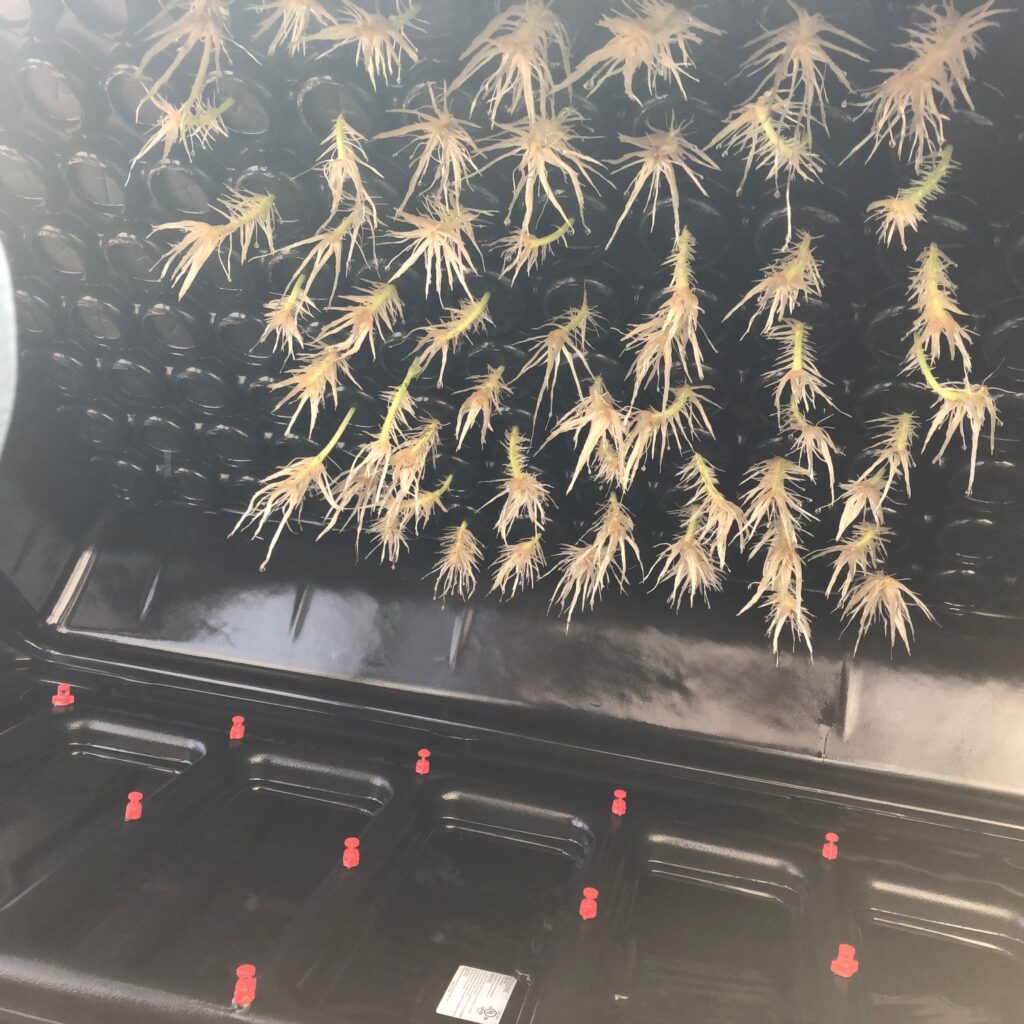
A big advantage here is reliability. Everything sits inside a low pressure aeroponic cloner system, including lots of water or nutrient solution. When operating at lower pressures the droplets don’t really make a mist, however, the sprayers aren’t nearly as prone to clogging as with finer mist systems that require high pressures to operate. Even if a low pressure mister does get clogged, there are usually many more in the manifold and there is little risk of the cut stem become dehydrated before rooting. All this reliability does come at some slight cost in aeroponic cloner rooting time versus high pressure aeroponic cloners.
High pressure aeroponic cloners are capable of faster aeroponic rooting times because they offer a more precise level of control over air to moisture levels in the rooting chamber surrounding the cut stems. There is typically no volume of solution stored inside high pressure aeroponic cloning (HPAC) systems. Rather, an external high pressure pump and reservoir deliver a controlled volume of mist to cut stems at precise volumes and intervals. Any excess nutrient solution is drained away as waste or back to the reservoir for the next injection interval.
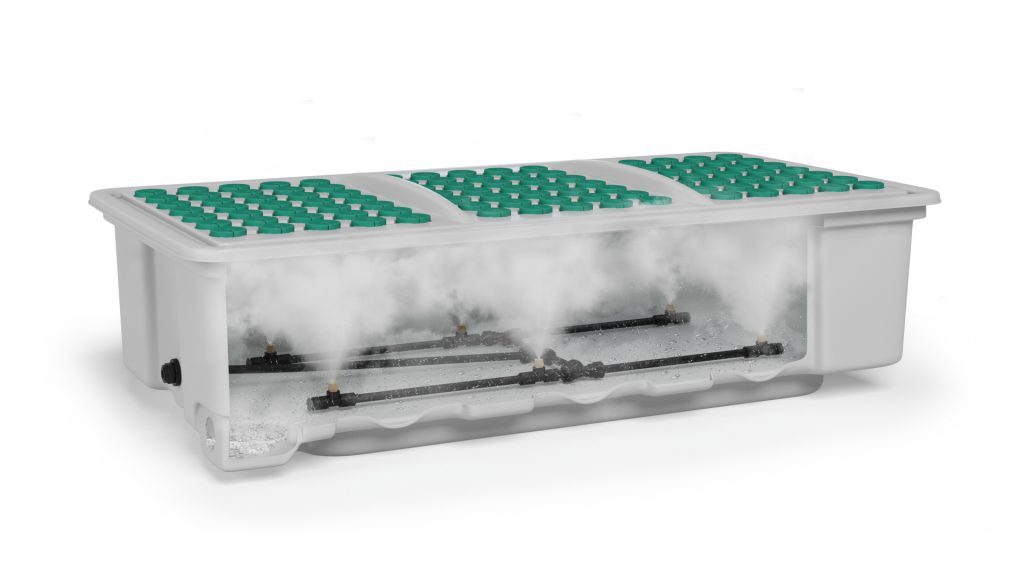
Above: Looking inside CCH2O’s HP Aero cloner.
HPAC systems typically use fewer nozzles per rooting chamber than their low pressure counterparts, so, if a single nozzle clogs there may not be adequate moisture supplied to cut stems to keep them hydrated or for optimal rooting. And because they operate at higher pressures with finer nozzle orifices (to create finer sprays) they are more prone to clogging from any organic debris, residues, etc that might occur with time in the reservoir.
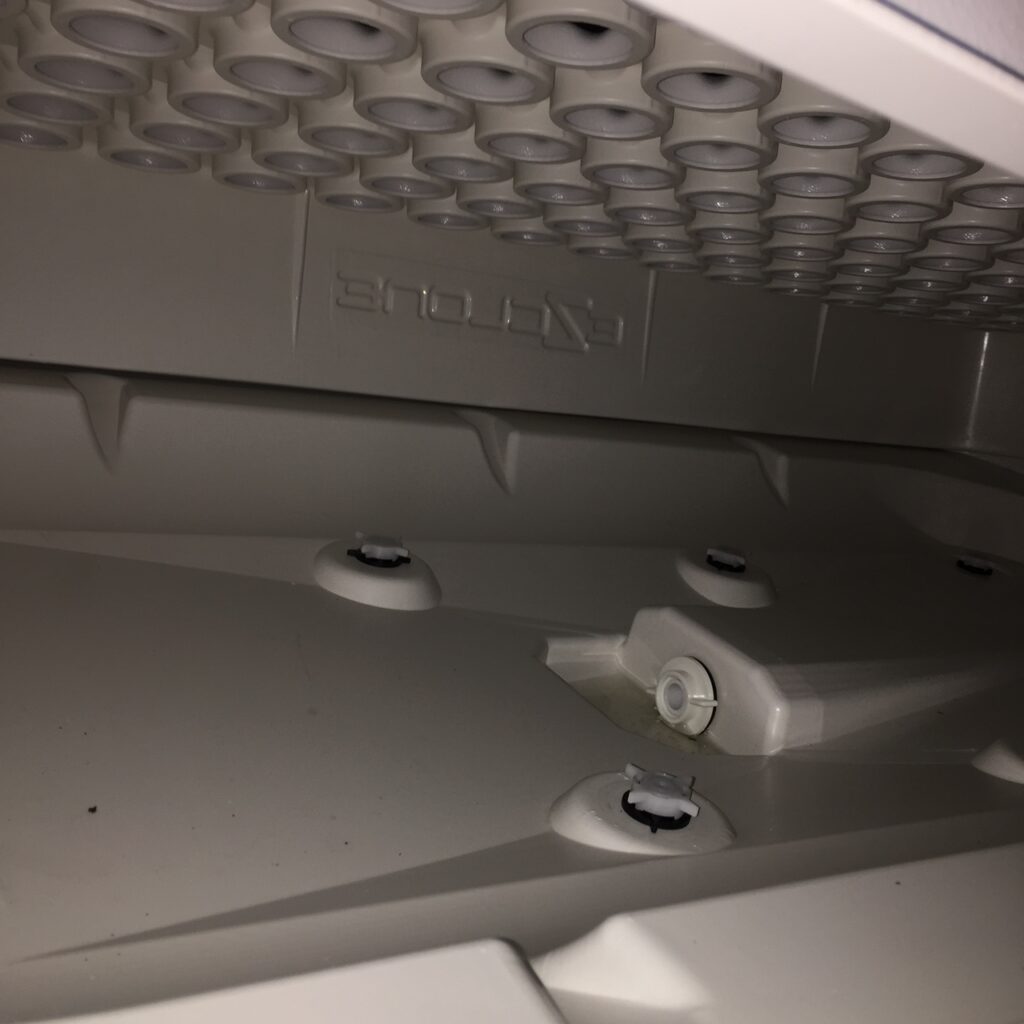
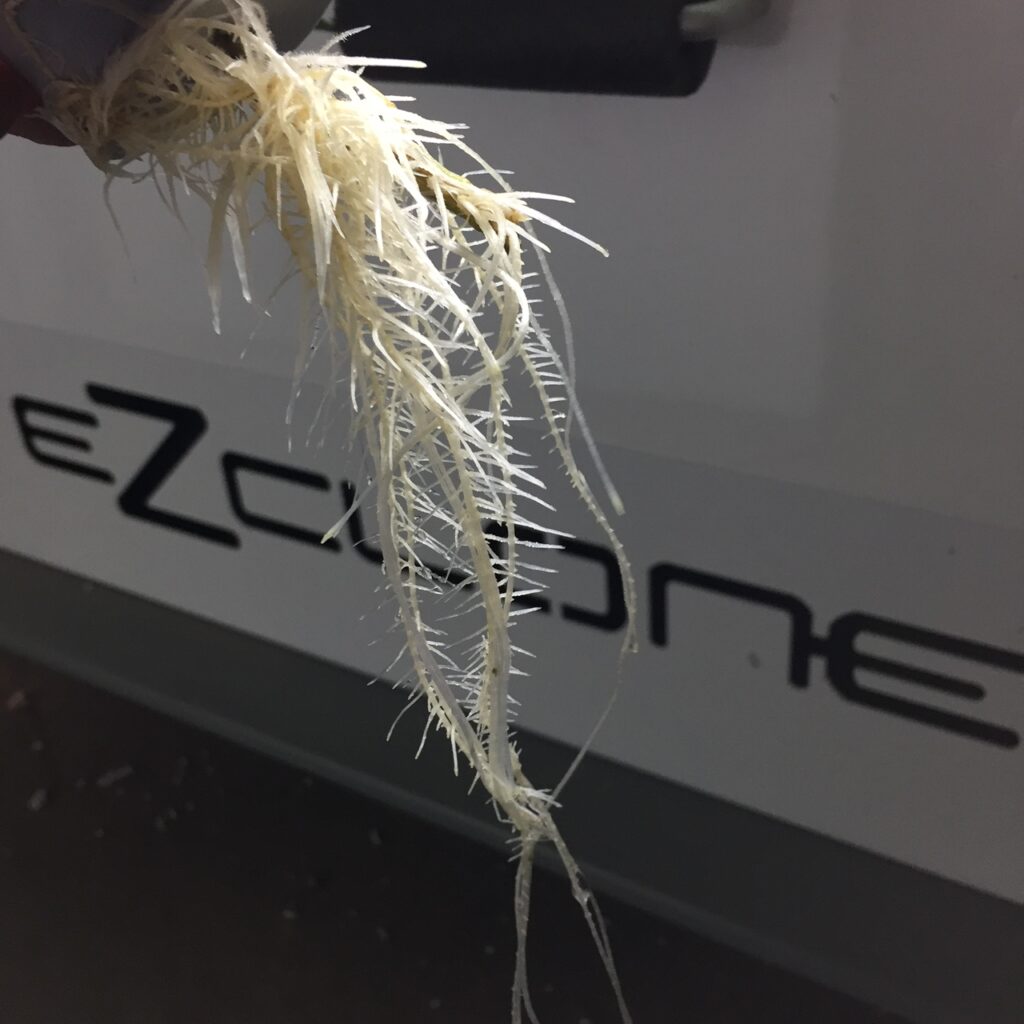
Above: Healthy roots developing in EZ-CLONE’s PRO System
Factors that Affect Aeroponic Cloner Rooting Time
Before reading through the following note that aeroponic cloning is really easy. Follow the basic guidelines supplied with your system and chances are you’ll do great. However, if you want to understand more about WHY these recommendations should be followed and HOW they benefit the aeroponic rooting process the list of factors detailed below should hopefully help to provide some more insight so you can fine tune and improves on your aeroponic plant propagation successes.
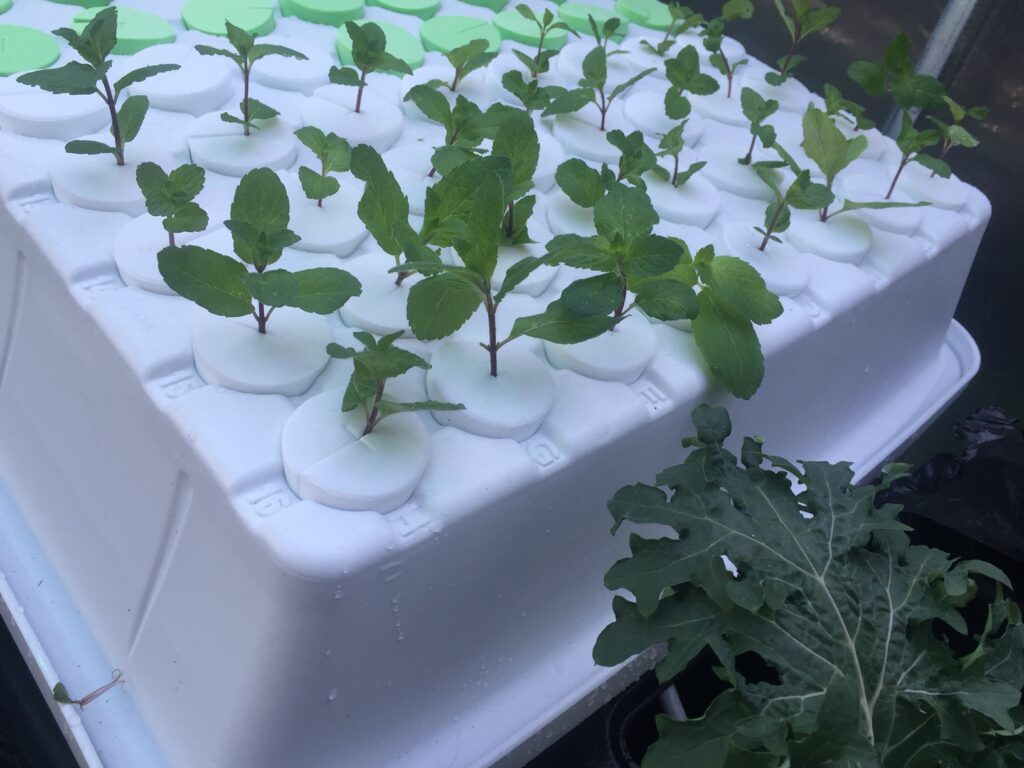
Above: Scotch Spearmint rooting in an aeroponic cloner.
Variety & Strain
Some plants root better than others from cut stems. Even within the same type of plant, different strains or cultivars can consistently have different aeroponic cloner times.
Age of Donor Material
As plants get older, the growth tends to get harder. Harder plant material typically takes more time to root versus soft or semi-soft stems.
Health of Donor Material
If the mother plant has issues like deficiencies or pathogens it can very adversely affect rooting time. TIP Don’t propagate sickly plants as they typically lend way to sickly crops. Spend the time getting your donor stock healthy and in top form.
Plant Nutrition
Plants that are overfed fertilizers, especially those higher in Nitrogen (N) will typically yield donor material that takes longer to root. Lowering the EC in the root zone of mother plants without stressing them for one to three days before taking cuttings can sometimes increase how fast roots begin to form in aeroponic cloning systems.
Water Quality
This can play a really big role in how fast cuttings root as well as in the general health of the transplants created. Ideally, use RO (reverse osmosis) filtered water. Some growers will add 10-25% tap water to their RO water to help improve the stability of the pH as pure RO water can be very reactive.
DO (dissolved oxygen) Levels
Another heavily weighted factor for aeroponic cloner rooting time. Roots and cut stems for rooting LOVE oxygen. For explosive root growth, higher levels of dissolved oxygen potentiate the reaction. Aeroponic systems do a great job of maximizing D.O. levels versus other rooting methods.
Rooting Stimulators
Using a rooting hormone can speed up rooting times although they are not always essential–the high level of oxygen and easy access to moisture do a good job of stimulating healthy roots from cut stems naturally. In fact, the agar used to thicken a lot of rooting gels can act as a food source for unwanted bacteria in the system which can slow down rooting times and lead to propagation diseases like root or stem rot.
ORP Levels
Oxidative Reduction Potential of the solution is a good measure of the “health” of a hydroponic solution. When values are higher, it tends to indicate that the system is free of harmful microbial loads and that there is plenty of oxygen in the system. Hypochlorous acid additions (perfectly safe for people and plants when used as directed)) are an easy way to boost ORP levels and keep the solution used in aeroponics clean and free of pathogens. Hydrogen Peroxide (H2O2) or Ozone (O3) can also raise ORP levels, however, there is more risk of damage to plants or people versus hypochlorous acid.
Microbial Load
Any bio residues in the system can become a breeding ground for unwanted microbial life. The more sterile your aeroponic cloner system operates at, the faster your aeroponic rooting times will be and the lesser the chance you will run into any troubles like rots with your aeroponic clones.
Temperature
Another heavily weighted factor in aeroponic cloner rooting time. There is a bit of misconception that with aeroponic cloning the nutrient solution needs to be kept below 72 degrees F. Quite the opposite, in our experiences. Up to 85 degrees F is a good working temperature for most plant varieties–PROVIDED THAT THE SYSTEM IS MAINTAINED STERILE, I.E. NO ORGANIC MATTER IS PRESENT IN THE SYSTEM. Higher temperatures drives the plants metabolism at higher rates to rooting times can actually be quite a bit faster versus cooler temperatures.
Nutrient Solution Composition
Always use a complete nutrient intended for hydroponics or aeroponics at a very mild strength for best results. Avoid any organics in aeroponics. For most plant types and situations 0.2 EC (150 ppm, 500 scale) and pH 5.8 is a good place to start for most common garden plants. Change the nutrient solution weekly if you aren’t adding hypochlorous acid to prevent any build up of microbial loads or nutrient imbalances from occurring. Note that HPAC systems can be operated as drain to waste, simplifying nutrient management for cloning. Some plant varieties may prefer a stronger EC or a different pH level–do as much looking as you can to find out.
